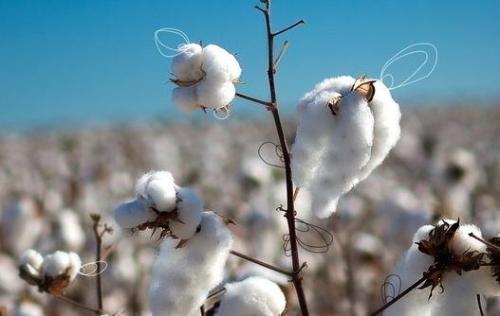
Sheyang County, Jiangsu Province was once the largest county for cotton production in Jiangsu Province, and it is also a key county for cotton production throughout the country. From 2000 to 2008, the annual total cotton production in the county exceeded 50,000 tons for nine consecutive years, and the proportion in the country and Jiangsu was basically stable at around 1% and 18%. In the past five years, due to various factors such as the structural adjustment of the crop industry, the increase in the cost of cotton planting, the decline in the relative efficiency, and the changing status of the agricultural labor force, the cotton planting area has become less and less.
In 2013, it was reduced to 200,000 mu and the total output was only 20,400 tons. This year, from the recent survey conducted by the County Cotton Association, the reduction will still exceed 10%. However, due to the unified adjustment of the farming model of some village groups, the limitation of production conditions, and the cultivation habits of farmers, nearly a quarter of the farmers in the county still adhere to cotton cultivation.
In order to protect the interests of cotton farmers, the country started in 2011, while continuing to subsidize cotton varieties, it also implemented temporary cotton storage. Despite the implementation of this policy, the country’s total storage and storage volume has increased rapidly, inventory pressure has been increasing, the domestic and foreign cotton spreads have continued to increase, the raw material costs of textile companies have risen, and the market competitiveness has declined. However, it has played a good supporting role in stabilizing cotton prices, stabilizing the market, and protecting farmers' cotton planting income.
To cope with the existing problems and the demands of all parties, the country will implement reforms on the temporary cotton purchase and storage that lasted for three years this year. The Central Document No. 1 has clearly stated that “continue to adhere to the principle of market pricing, explore the reforms that promote the decoupling of agricultural product price formation mechanisms from government subsidies, and gradually establish a target price system for agricultural products. Subsidize low-income consumers when market prices are too high, and low prices in the market. When the target price is subsidized by the producer, the income of farmers will be effectively protected." It is very clear that this kind of policy will not only facilitate the promotion of cotton prices from policy orientation to market regulation, but also accelerate the change in the status quo of textile enterprises, and will also enable the farmers' benefits to be better guaranteed by the system. The National Development and Reform Commission has already determined that this year only Xinjiang will be the only pilot region for the cotton direct subsidies policy, which means that the policy of direct subsidies for cotton will not be implemented in the mainland temporarily. With the cancellation of temporary cotton purchase and storage, domestic cotton prices will inevitably move closer to the market and fall.
Geng Yongcun Chen Yonghui of Haitong Town reported an account. Since 2011, the cotton planting area has basically stabilized at about 10 mu. The average yield per unit of seed cotton for three consecutive years in 2013 was 195 kg, 240 kg and 290 kg respectively. The average selling price was 7.3 yuan, 7.96 yuan and 8.04 yuan respectively; the direct income of cotton-planting (including the subsidies for state cotton breeding) was 1,449 yuan, 1916 yuan, and 2,347 yuan respectively; after excluding the cash cost of input, it included The income from the investment was 865 yuan, 1370 yuan and 1,730 yuan respectively. Although there is still a certain gap between the expected cotton prices and earnings in the same year, the overall shows that the cotton price has increased steadily and has a more balanced psychological balance.
Once the price of cotton tends to be priced in the market, it will gradually follow the international cotton price. Forecasting the New Cotton Year Even if the price of cottonseed can be stabilized at the level of the previous year, the average selling price of seed cotton will also drop to around 7 yuan, a decrease of 1.04 yuan compared with 2013, and the net income per mu will decrease by 301.6 yuan. However, whether this year's cotton production can reach the level of last year is still difficult to predict, and the input cost will continue to increase. If there is really no national policy support, the income of cotton planting will be reduced significantly. At present, the household plans to increase this year's cotton planting area to 14 mu, and before the Spring Festival, all cotton varieties have been purchased at home. Therefore, we are eagerly looking forward to the country's direct cotton subsidies policy can be sunny, benefiting all cotton farmers, in order to stabilize or increase cotton planting income.
In Sheyang, the number of cotton-growing households like Chen Yonghui is still in the minority. Everyone hopes to directly implement the specific implementation opinions or plans of the policy and can be announced before the end of March in the end of March to ensure that the cotton farmers have a bottom in their hearts. The cotton planting area will be finalized as soon as possible, and this year's cotton will be better planted.
Crystal Organza Fabric,Polyester Organza Fabric,Dubai Curtain Organza Fabric,Jacquard Linen Fabric
shaoxing sherry import and export co.,ltd , https://www.sherryfabric.com